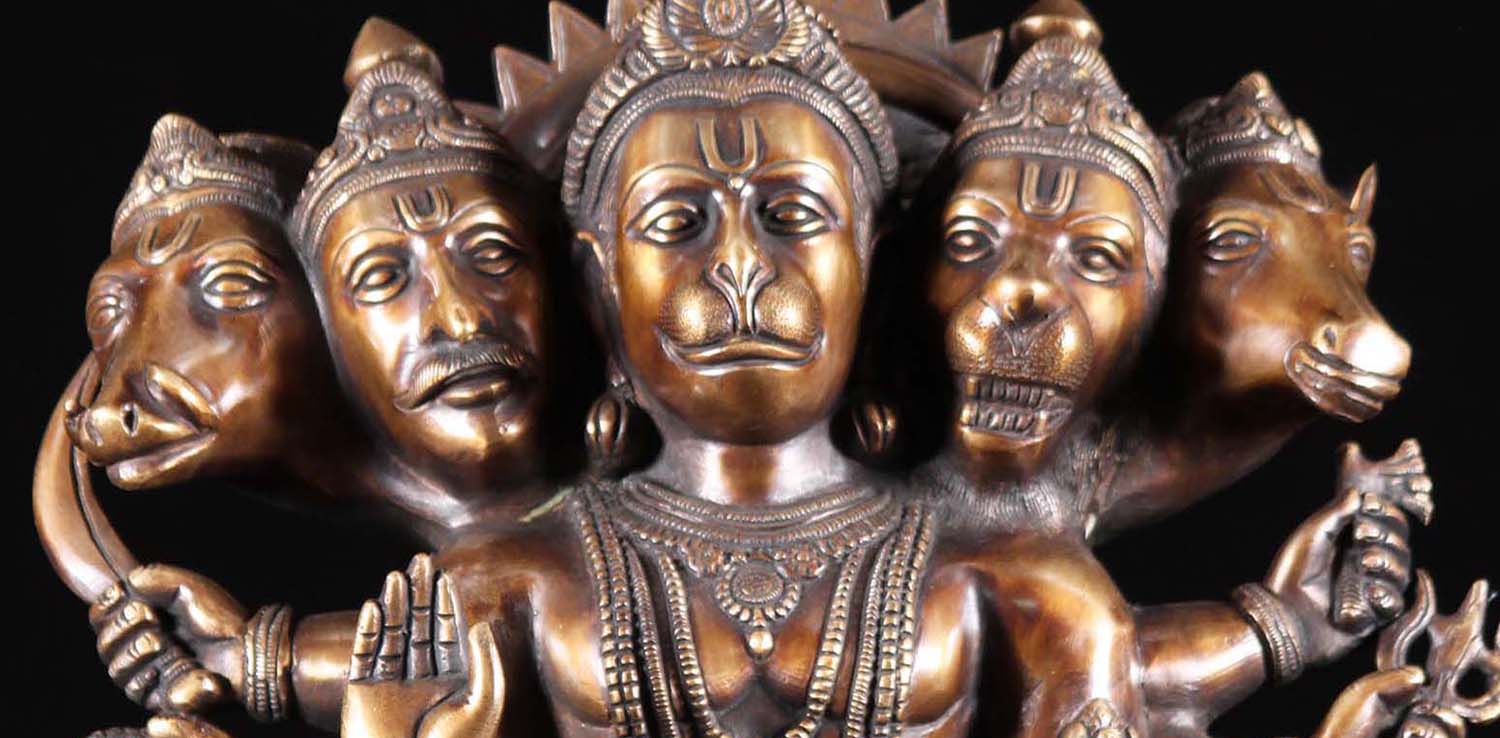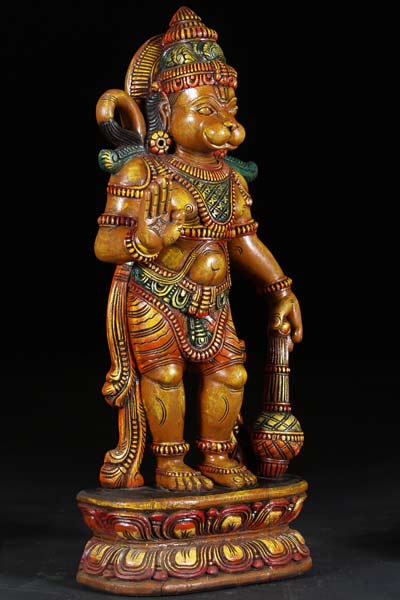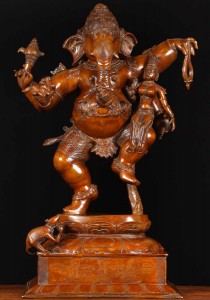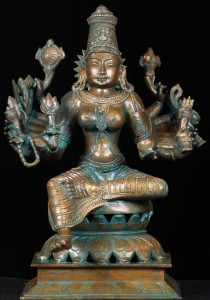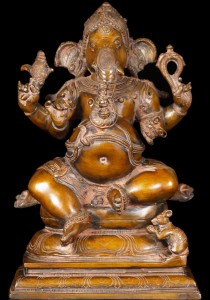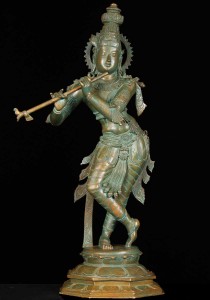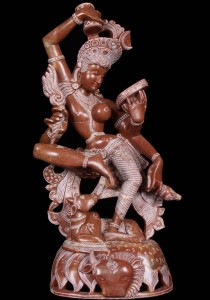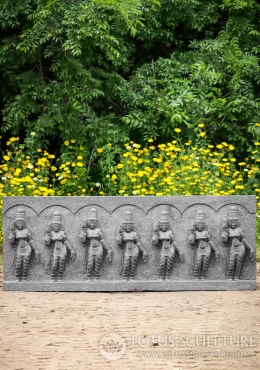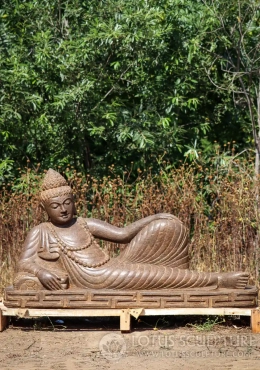Hindu God Lord Hanuman (The Monkey God) or Hanuman Ji is the greatest devotee of Lord Rama and plays a vital role in the Hindu epic Ramayana. He is the son of Vayu or Marut (The Wind God) and Anjani. Anjaneya, Anjani Putra, Hanumat, Bajarangabali, Hanuman, Mahaveer (the great hero), Maruti, Pavanputra (son of air) are some of His names used by devotees.
Hanuman, worshiped for his strength, knowledge, valor, divinity, agility, and considered as the symbol of devotion and dedication.
Some say Hanuman was born as the son of the King and Queen of the Monkeys. To others, he is the son of Anjana, an female Apsara who had been transformed into a monkey by a curse, and Vayu, the wind god. It is also said that from his father Vayu Hanuman received the ability to fly.
His devotees will fast on Saturdays and Thursdays, give offerings to him and chant the mantras to please Him so that He will do miracles in the life of the devotees.
Here, are some of the popular Mantras of Hanuman:
1. Hanuman Beeja Mantra
“Aum Aeem
Bhreem Hanumate,
Shree Ram Dootaaya Namaha“
Meaning: We plead to the Lord Hanuman, who is the greatest server and messenger of the Lord Shree Rama.
2. Hanuman Mantra – For Jobs, Promotions & Examinations
Thursday is considered to be the auspicious day to chant this mantra and it is widely used by students to pass the examinations as well as employees to get promotions.
“Om
Shree Vajradehaya
Ramabhakthaya Vayuputhraya“
3. Hanuman Gayathri Mantra
It is believed that the energy that fills up your life by chanting this mantra will guard you against all dangers and strengthen you with courage and knowledge.
“Om Anjaneyaya Vidmahe
Vayuputraya Dheemahi,
Tanno Hanuman Prachodayat“
Meaning: We pray to the son of Goddess Anjani and the son of the “Wind”. May Lord Hanuman lead our intellect towards intelligence and “knowing”
4. Hanuman Mantra
This mantra praises Hanuman as the messenger of the Lord Rama, who is the incarnation of Lord Vishnu. Hanuman can travel swiftly and is very intelligent. He is also described as the chief of the monkey army and the son of Vayu (Wind God).
Manojavam
Maarutatulyavegam
Jitendriyam Buddhimataam
Varistham,
Vaataatmajam
Vaanarayoothmukhyam
Sriramdootam Saranam
Prapadhye.
5. Mantra of Bhakta Hanuman
“Amjanii-Garbha Sambhuuta
Kapii-[I]ndra Sacivo[a-U]ttama
Raama-Priya Namas-Tubhyam
Hanuman Rakssa Sarvadaa“
Meaning: I bow to you, mighty Hanuman, Who was born from the Womb of Mother Anjani, and who is the most Excellent Minister of the King of Monkeys. He is extremely dear to Sri Rama; I Bow to You, O Hanuman, Please Protect me always.
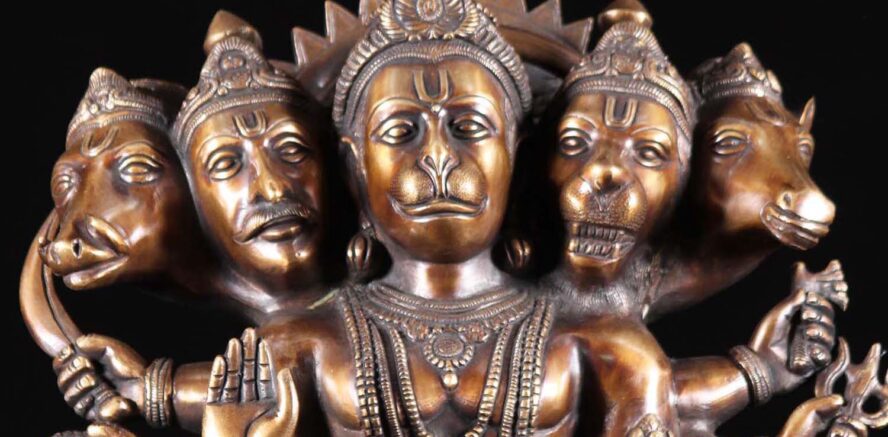
5. Hanuman Chalisa Mantra
“Shrii-Guru Carann Saroja-Raja,
Nija-Mana-Mukura Sudhaara
Barannau Raghu-Bara Bimala Yasha,
Jo Daayaka Phala-Caara “
Meaning: I clean my mind with the help of the dust of the lotus like feet of Sri Gurudeva. I describe the Sacred Glory of Sri Rama Chandra, who bestows the Four Fruits of Life (Dharma, Artha, Kama and Moksha).
“Buddhi-Hiina Tanu Jaanike,
Sumirau Pavan Kumaar
Bala Buddhi-Vidyaa Dehu Mohi,
Harahu Kalesha Vikaar “
Meaning: O Pavan Puthra, I meditate on you, please consider me as I am ignorant. Bestow on me Strength, Wisdom and Knowledge, and Remove my Afflictions and Blemishes.
“Jay Hanumaan
Jnaan Gunn Saagar
Jai Kapiis
Tihu-Lok Ujaagar “
Meaning: Victory to You, O Hanuman. You are the Ocean of Wisdom and Virtue. Victory to the king of the monkeys and the enlightener of the three Worlds.
“Raama-Duut Atulit Bala-Dhaamaa
Anjani-Putra Pavan-Sut Naamaa “
Meaning: O Lord, you are the Messenger of Sri Rama possessing incalculable Strength. You are known as Anjani-Putra (son of Anjani) and Pavana-Suta (son of Pavana, the wind-god).
“Mahaa-biir Bikrama Bajarangii
Kumati Nivaar Sumati Ke Sangii “
Meaning: O Lord, you are a great hero who is extremely valiant and have a strong body as that of a thunderbolt. You are the dispeller of evil thoughts and companion of Good Sense and Wisdom.
“Kancan Barann Biraaj Subeshaa
Kaanan Kunddala Kuncita Keshaa “
Meaning: You possess a Golden Hue, and you are Neatly Dressed, You wear Ear-Rings and have beautiful Curly Hair.
“Haath Bajra Au Dhvajaa Biraajai
Kaandhe Muuj Janeuu Saajai “
Meaning: You are the one who holds both the Thunderbolt and the Flag in your Hands. You also wear the Sacred Thread across your Shoulder.
“Shankar-Suvan Kesharii-Nandan
Teja Prataap Mahaa Jag-Vandan “
Meaning: O Lord, you are the incarnation of Lord Shiva and son of Kesari, who has been adored by the whole world because of your power and bravery.
“Vidyaavaan Gunnii Ati Caatur
Raam Kaaj Karibe Ko Aatur “
Meaning: You are the one who is extremely intelligent, virtuous, and scholar. You are always ready to serve Sri Ram
“Prabhu Caritra Sunibe Ko Rasiyaa
Raamalassann Siitaa Man Basiyaa “
Meaning: You are delighted when the glories of Sri Ram are played. You have Sri Rama, Sri Lakshmana, and Devi Sita Dwelling in your Heart.
“Suukssma Ruupadhari Siyahi Dikhaavaa
Vikatt Ruup Dhari Lamka Jaraavaa “
Meaning: In the Diminutive Form, you appeared before Sita Devi and you also assumed the awesome form to burn Lanka.
“Bhiim Ruup Dhari Asur Samhaare
Raamacandra Ke Kaaj Samvaare “
Meaning: Assuming the gigantic form, you destroyed the Demons of Lanka, thereby accomplishing the task bestowed on Him by Sri Ram.
“Laal Deha Laaleel-Se,
Arudhari-Laal Langoor
Vajra Deha Daanava Dalan,
Jai Jai Jai Kapi-Soor “
Meaning: We pray to the red-colored one, whose entire body is red, and is decorated with red-colored sindoor. We pray to the one draped with a red-colored loin-cloth. We pray to the one whose body is firm and strong like the vajra. We pray to the destroyer of demons. We bow in praise again and again to the supreme among Gods, Lord Hanuman.
7. Prayer for Hanuman
“Manojavam Maruta Tulya Vegam,
Jitendriyam Buddhi Mataam Varishtham
Vaataatmajam Vaanara Yooth Mukhyam,
Shree Raama Dootam Sharnam Prapadye “
Meaning:
Manojavam– Let I pray to the one who is swift as thought
Marut.tulya.vegam- the one who is more powerful than the wind
jitendriyam– the one who has conquered his senses
vaataatmajam– the one who is supreme among all intelligent beings, the son of the wind-god
vaanar.yooth.mukhyam– the commander of the army of forest creatures
Give me refuse, the messenger of Lord Rama, the incomparable Lord Hanuman. Please accept me and my prayers at your feet.
View All Our Mantras to Hindu Gods
including English and Sanskrit translations
| 10 Kali Mantras | 15 Saraswati Mantras | 4 Ganesha Mantras |
| 6 Murugan Mantras | 8 Krishna Mantras | 7 Hanuman Mantras |
| 3 Lakshmi Mantras | 8 Vishnu Mantras | 5 Shiva Mantras |

